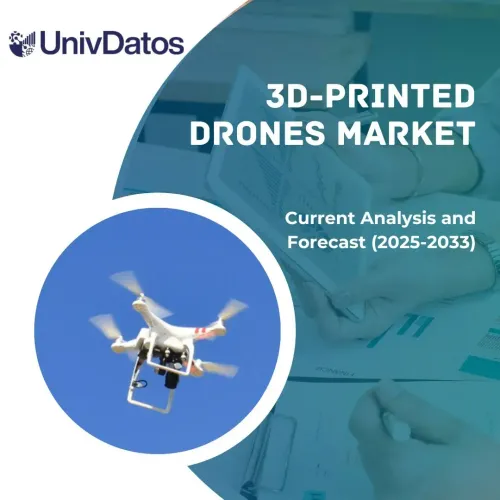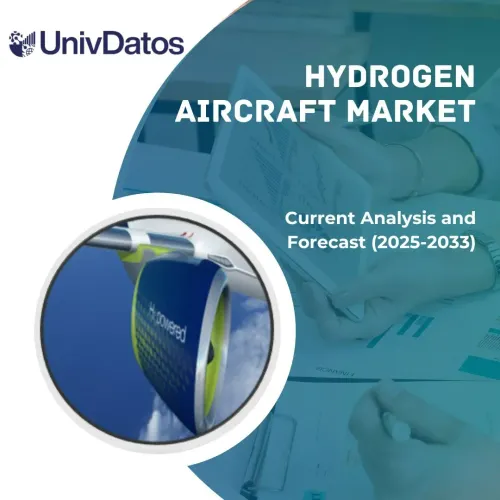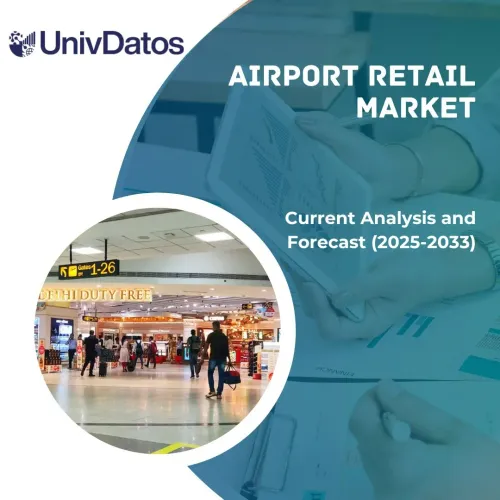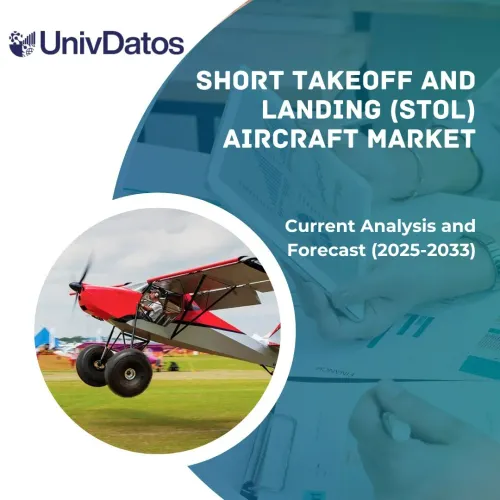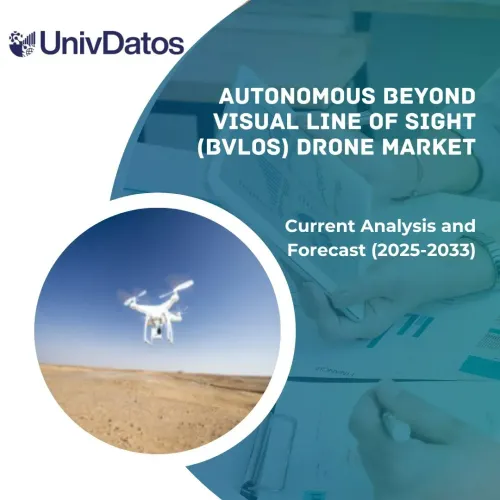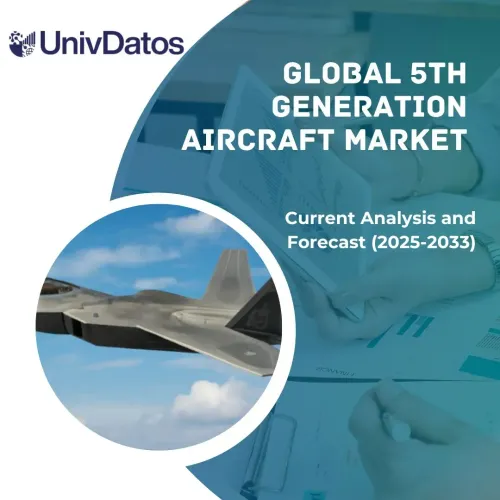- Home
- About Us
- Industry
- Services
- Reading
- Contact Us
Next Generation Avionics Market: Current Analysis and Forecast (2024-2032)
Emphasis on By Type (Management System Avionics, Communication System Avionics, Navigation System Avionics, Other Electronics); By Application (Civil Aircraft, Military Aircraft) and Regions (North America (The US, Canada, Rest of North America), Europe (Germany, The UK, France, Italy, Spain, Rest of the Europe), Asia-pacific (China, Japan, India, Rest of the Asia-pacific), Rest of the World)
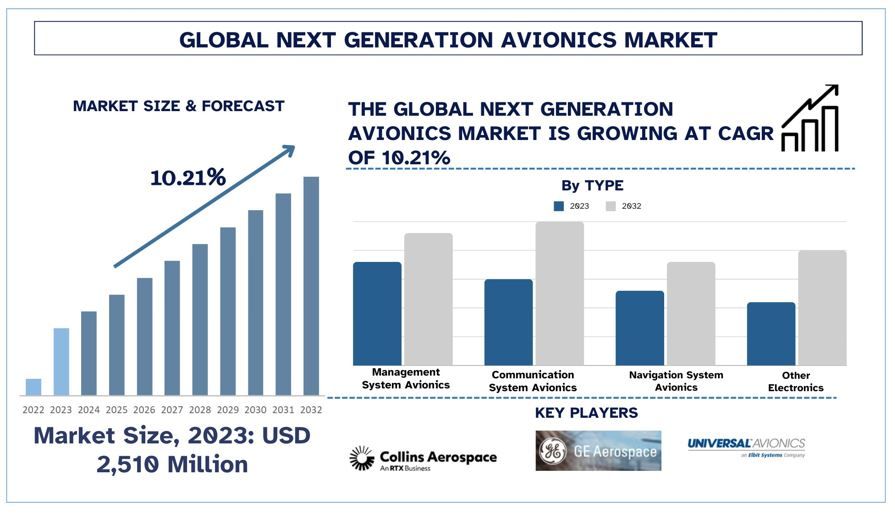 Global Next Generation Avionics Market Size & Forecast
Global Next Generation Avionics Market Size & Forecast
The Global Next Generation Avionics market was valued at USD 2,510 million in 2023 and is expected to grow at a strong CAGR of around 10.21% during the forecast period (2024-2032) owing to rising demand for Next Generation Avionics in the aircraft industry across the globe.
Global Next Generation Avionics Market Analysis
Next-generation avionics are used for predictive maintenance, remote assistance, visualization of maintenance issues, training purposes, ease of handling, and improving customer experience. The integration of next-generation technologies in avionics has made flight operations significantly easier as well as led to a reduction the fuel costs and energy and resource utilization due to which the market has witnessed a sizeable growth in recent growth.
The Global Next Generation Avionics market was valued at USD 2,510 million in 2023 and is expected to grow at a strong CAGR of around 10.21% during the forecast period (2024-2032). One of the key factors that has remarkably supported the integration of next-generation avionics solutions is the integration of digital cockpits and head-up displays. These displays are integrated with the new generation of aircraft to overlay critical flight information such as navigation data, airspeed, engine temperature, fuel, and altitude directly in the pilot’s view. Many aviation companies have started integrating head-up displays to offer such functionality to provide a compressive field of view to the pilot and offer better situational awareness. For instance, in 2024, the government of Singapore announced its plans to purchase 8 new F35 aircraft. This purchase would be on top of an earlier 12 F35A aircraft purchase signed by the government of Singapore.
In another instance, in 2024, the government of Germany announced its plans to purchase 20 additional Eurofighter Typhoon aircraft (4.5 generation) by the end of year 2025.
The demand for a unified field of view along with the integration of a majority of functions in the aircraft’s display the demand for Next Generation Avionics in the systems has massively emerged.
Global Next Generation Avionics Market Trends
This section discusses the key market trends that are influencing the various segments of the Global Next Generation Avionics Market as identified by our team of research experts.
Integration of Artificial Intelligence (AI) and Machine Learning (ML)
One of the key concerns of the aviation industry across the globe is timely maintenance and reducing the risk to a greater degree. With the advent of flight safety analytics and the integration of artificial intelligence and machine learning techniques, the ability to anticipate and mitigate possible risks in flight operations has drastically been reduced. With the help of real-time data analysis, AI and machine learning can reduce the risk by providing predictive insights, and possible course corrections which earmarked the presence through its adoption by leading aircraft manufacturers. Airbus is one of the leading companies among these to adopt similar technologies as it uses Skywise, an open data platform that collects vast amounts of data from all the aircraft of Airbus, which helps to improve operational excellence by greater fleet operational performance and reliability.
With the growing need for predictive systems, AI diagnostics, and improving flight operations in the aviation industry, the demand for Next Generation Avionics in this particular category is anticipated to find rapid growth, subsequently improving its market in the coming years.
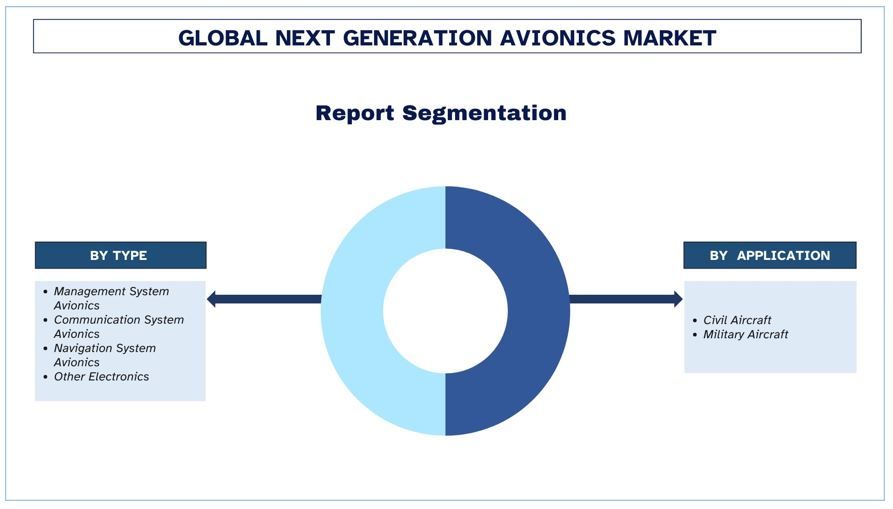
North America is Expected to Hold Major Market Share During Forecast Period
North America’s Next Generation Avionics market has held the major market share across the globe. Some of the key factors that have contributed to the growth are the presence of the largest commercial and military aircraft fleet leading to a sizeable demand for OEM next-generation avionics. The North American aviation industry is further anticipated to rise due to massive orders being placed by the leading aviation companies in recent years. For instance, in 2024, American Airlines ordered 260 new aircraft from Airbus, Boeing and Embraer. With the massive purchase, the airline is looking forward to expanding its international operations for trans-Atlantic operations.
Boeing is one of the key manufacturers that has a vast list of unfilled orders, YTD deliveries, etc. For instance, according to Boeing, total unfilled orders for 737, 767, 777, and 787 models were 4763, 96, 539, and 790 units till 5/31/2024.
Considering the vast unfilled orders that are to be delivered in the coming years, the demand for next generation avionics for flight operations and pilot training is anticipated to rise in the forecasted years, i.e., 2024-2032.
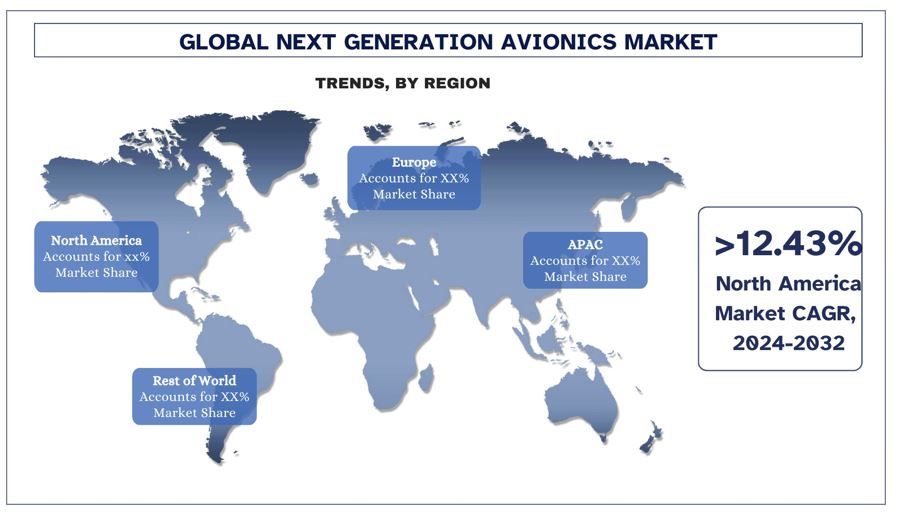
Global Next-Generation Avionics Industry Overview
The Global Next Generation Avionics market is competitive and fragmented, with the presence of several global and international market players. The key players are adopting different growth strategies to enhance their market presence, such as partnerships, agreements, collaborations, new product launches, geographical expansions, and mergers and acquisitions. Some of the major players operating in the market are Collins Aerospace, Thales, General Aviation (General Electric Company), L3harris Technologies Inc., Universal Avionics, Curtiss-Wright Corporation, Safran, Cobham Limited, BAE System, Garmin Limited, and Honeywell International Ltd.
Global Next Generation Avionics Market News
- In 2024, the government of the Czech Republic signed a deal with the government of the US to buy 24 new F35 jets. The total worth of the deal would be USD 6.6 billion, to be delivered between 2031 to 2035.
- In January 2024, the French government announced the purchase of 42 additional Rafale Jets with a total cost of USD 5.5 billion. The respective aircraft will be delivered between 2027 to 2032.
Reasons to buy this report:
- The study includes market sizing and forecasting analysis validated by authenticated key industry experts.
- The report presents a quick review of overall industry performance at one glance.
- The report covers an in-depth analysis of prominent industry peers with a primary focus on key business financials, product portfolios, expansion strategies, and recent developments.
- Detailed examination of drivers, restraints, key trends, and opportunities prevailing in the industry.
- The study comprehensively covers the market across different segments.
- Deep dive regional level analysis of the industry.
Customization Options:
The Global Next Generation Avionics market can further be customized as per the requirement or any other market segment. Besides this, UMI understands that you may have your own business needs; hence, feel free to connect with us to get a report that completely suits your requirements.
Global Next Generation Avionics Market Report Coverage
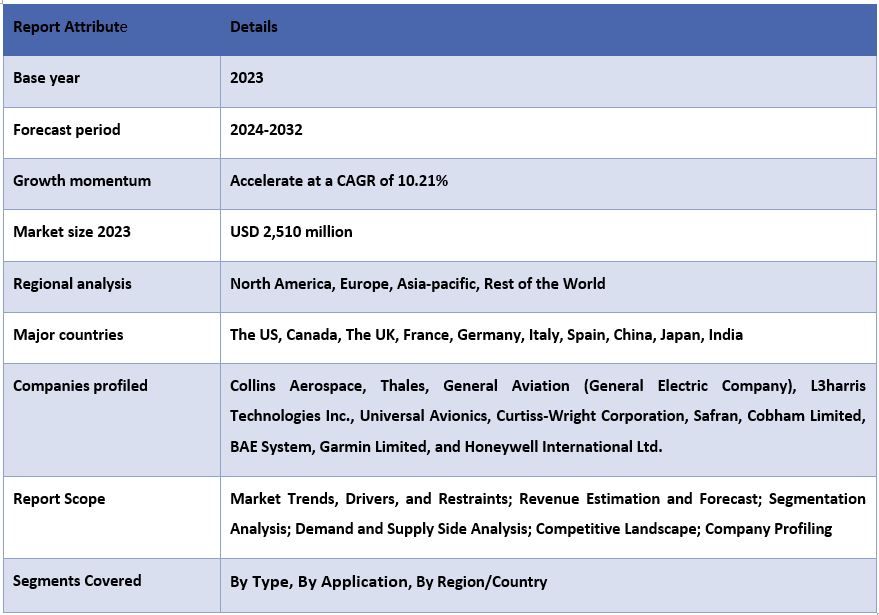
Table of Content
Research Methodology for the Global Next Generation Avionics Market Analysis (2024-2032)
Analyzing the historical market, estimating the current market, and forecasting the future market of the Global Next Generation Avionics market were the three major steps undertaken to create and analyze the adoption of Global Next Generation Avionics in major regions globally. Exhaustive secondary research was conducted to collect the historical market numbers and estimate the current market size. Secondly, to validate these insights, numerous findings and assumptions were taken into consideration. Moreover, exhaustive primary interviews were also conducted with industry experts across the value chain of the Global Next Generation Avionics market. Post assumption and validation of market numbers through primary interviews, we employed a top-down/bottom-up approach to forecasting the complete market size. Thereafter, market breakdown and data triangulation methods were adopted to estimate and analyze the market size of segments and sub-segments of the industry. Detailed methodology is explained below:
Analysis of Historical Market Size
Step 1: In-Depth Study of Secondary Sources:
A detailed secondary study was conducted to obtain the historical market size of the Global Next Generation Avionics market through company internal sources such as annual reports & financial statements, performance presentations, press releases, etc., and external sources including journals, news & articles, government publications, competitor publications, sector reports, third-party database, and other credible publications.
Step 2: Market Segmentation:
After obtaining the historical market size of the Global Next Generation Avionics market, we conducted a detailed secondary analysis to gather historical market insights and share for different segments & sub-segments for major regions. Major segments are included in the report as by type and by application. Further regional/country-level analyses were conducted to evaluate the overall adoption of testing models in that region.
Step 3: Factor Analysis:
After acquiring the historical market size of different segments and sub-segments, we conducted a detailed factor analysis to estimate the current market size of the Global Next Generation Avionics market. Further, we conducted factor analysis using dependent and independent variables such as by type and by application in the Global Next Generation Avionics market. A thorough analysis was conducted for demand and supply-side scenarios considering top partnerships, mergers and acquisitions, business expansion, and product launches in the Global Next Generation Avionics market sector across the globe.
Current Market Size Estimate & Forecast
Current Market Sizing: Based on actionable insights from the above 3 steps, we arrived at the current market size, key players in the Global Next Generation Avionics market, and market shares of the segments. All the required percentage shares split, and market breakdowns were determined using the above-mentioned secondary approach and verified through primary interviews.
Estimation & Forecasting: For market estimation and forecast, weights were assigned to different factors, including drivers & trends, restraints, and opportunities available for the stakeholders. After analyzing these factors, relevant forecasting techniques, i.e., the top-down/bottom-up approach, were applied to arrive at the market forecast for 2032 for different segments and sub-segments across the major markets globally. The research methodology adopted to estimate the market size encompasses:
- The industry’s market size, in terms of revenue (USD) and the adoption rate of the Global Next Generation Avionics market across the major markets domestically
- All percentage shares, splits, and breakdowns of market segments and sub-segments
- Key players in the Global Next Generation Avionics market in terms of products offered. Also, the growth strategies adopted by these players to compete in the fast-growing market.
Market Size and Share Validation
Primary Research: In-depth interviews were conducted with the Key Opinion Leaders (KOLs), including Top Level Executives (CXO/VPs, Sales Head, Marketing Head, Operational Head, Regional Head, Country Head, etc.) across major regions. Primary findings were then summarized, and statistical analysis was performed to prove the stated hypothesis. Inputs from primary research were consolidated with secondary findings, hence turning information into actionable insights.
Split of Primary Participants in Different Regions
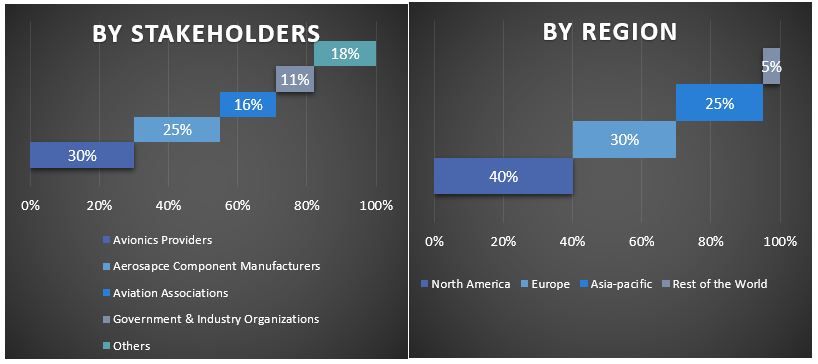
Market Engineering
The data triangulation technique was employed to complete the overall market estimation and to arrive at precise statistical numbers for each segment and sub-segment of the Global Next Generation Avionics market. Data was split into several segments and sub-segments after studying various parameters and trends by type and by application in the Global Next Generation Avionics market.
The main objective of the Global Next Generation Avionics Market Study
The current & future market trends of the Global Next Generation Avionics Market were pinpointed in the study. Investors can gain strategic insights to base their discretion for investments on the qualitative and quantitative analysis performed in the study. Current and future market trends determined the overall attractiveness of the market at a regional level, providing a platform for the industrial participant to exploit the untapped market to benefit from a first-mover advantage. Other quantitative goals of the studies include:
- Analyze the current and forecast market size of the Global Next Generation Avionics market in terms of value (USD). Also, analyze the current and forecast market size of different segments and sub-segments.
- Segments in the study include areas of by type and by application.
- Define and analyze the regulatory framework for Global Next Generation Avionics in the aviation industry.
- Analyze the value chain involved with the presence of various intermediaries, along with analyzing customer and competitor behaviors of the industry.
- Analyze the current and forecast market size of the Global Next Generation Avionics market for the major regions.
- Major countries of regions studied in the report include North America (The US, Canada, and Rest of North America), Europe (The UK, France, Germany, Italy, Spain, Rest of Europe), Asia-pacific (China, Japan, India, Rest of the Asia-pacific), Rest of the World
- Company profiles of the Global Next Generation Avionics market and the growth strategies adopted by the market players to sustain in the fast-growing market.
- Deep dive regional level analysis of the industry
Frequently Asked Questions FAQs
Q1: What is the current market size and growth potential of the Global Next Generation Avionics market?
Q2: What is the driving factor for the growth of the Global Next Generation Avionics market?
Q3: Which segment has the largest share of the Global Next Generation Avionics market by type?
Q4: Which region will dominate the Global Next Generation Avionics market?
Related Reports
Customers who bought this item also bought

